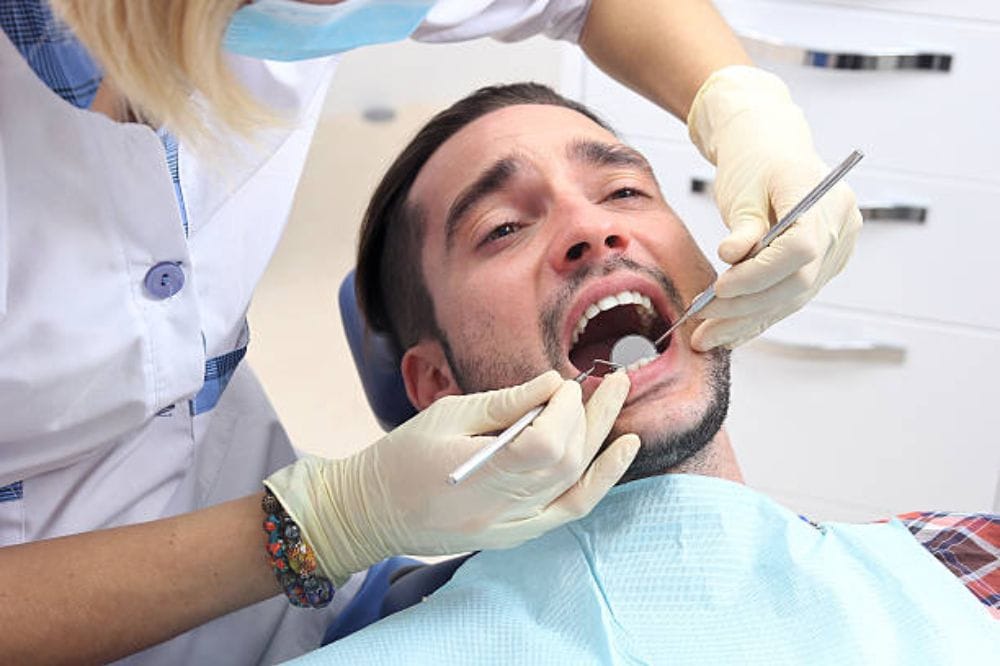
Getting a tooth extracted can be difficult, especially if you have heard about the risk of dry socket, which can become complicated after extractions, but the best part is that it can be avoided with proper care.
If you are thinking of receiving a tooth extraction in NW Calgary, knowing what dry socket is and how to protect it will help you heal comfortably and safely.
What Is a Dry Socket?
Once a tooth is pulled, a blood clot usually forms in the vacant socket. It shields the bone and nerves while healing occurs. A dry socket results when the clot fails to form, breaks down too quickly, or gets knocked out.
- Symptoms of dry socket are:
- Extreme pain that radiates to the ear, eye, or jaw
- Visible bone in the socket
- Bad odour or putrid taste in the mouth
- Dry socket usually appears 2–4 days after an extraction and requires treatment from a dentist.
When to Visit a Dentist
If you’re in pain that doesn’t improve with medication, it’s time to visit a dentist near you. While mild discomfort is normal after an extraction, severe or worsening pain may signal dry socket.
A dentist may clean the spot, place a medicated dressing, and give pain relief medication to facilitate faster healing. Early care also keeps the issue from becoming worse.
How to Recognize Tooth Extraction Dry Socket Risks
Not everybody develops a dry socket, but some things heighten the risk. Tooth extraction, dry socket is more probable if you:
- Smoke or use tobacco products
- Drink using a straw too soon after surgery
- Poor oral hygiene
- Underwent trauma during extraction (such as with wisdom teeth)
- Take birth control pills or medications that impact healing
Being aware of the risks means that you can take added precautions during recovery.
How to Prevent a Dry Socket?
Ask your dentist to give you post-surgery tips, and use them to heal with all safety. safely. If you are thinking about avoiding dry socket, you should use the tips below:
- For at least 48 to 72 hours, don’t smoke or use tobacco.
- Do not hold your breath when you spit, drink through a straw, or rinse too hard.
- For the first few days, eat soft things like soup, yogurt, or mashed potatoes.
- Don’t brush your teeth, but do gently brush the area where the surgery was done.
- Follow the directions on any medicines or painkillers you are given.
- Taking these small steps can help you get better a lot.
Home Care vs. Professional Care: A Quick Comparison
Care Type | What It Involves | Best For |
Home Care | Soft foods, rest, ice packs, and over-the-counter pain relievers | Normal soreness and swelling after extraction |
Professional Care | Dentist cleaning, medicated dressings, stronger pain management | Severe pain, visible bone, or signs of dry socket |
This table shows when home remedies are enough and when it’s time to see your dentist.
Wrapping up!
Tooth extraction can lead to dry socket, but it doesn’t have to. By taking good care and acting fast if pain sets in, you can prevent this complication and recover smoothly.
At Sage Hill Dental, our team takes extra care to check the patient’s well-being and ensure they get the right treatment while recovering.
If you’re worried about pain following an extraction, we’re here to support you in your recovery with confidence. Book an appointment today.
FAQs
Q1. How long does pain last after a tooth extraction?
Mild swelling and pain are to be expected for the first 2–3 days. If pain is severe or persists after a week, you need to see your dentist.
Q2. Can a dry socket heal on its own?
Dry socket does not heal as well without intervention. A dentist must clean the area and apply a medicated dressing to facilitate healing and reduce pain.
Q3. What foods should I eat to prevent dry socket?
Stick to soft, easy-to-chew foods like yogurt, mashed potatoes, smoothies, scrambled eggs, and soup for the first few days.

